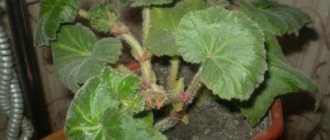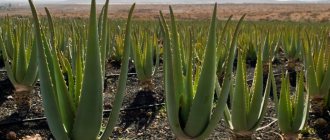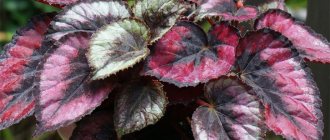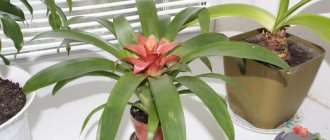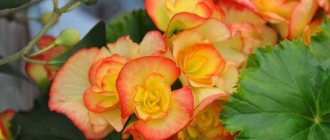- September 16, 2018
- Houseplants
- Natali Michaelis
Monstera is a vine with rather large and beautiful leaves. It is valued by many gardeners for its unpretentiousness and exotic appearance. If you provide an indoor flower with good conditions, it will grow quickly. In some cases, the plant may bloom, although it is grown primarily as an ornamental foliage crop. A huge vine with large cut leaves - that’s what a monstera is. Home care involves creating a microclimate close to the tropical. Read our article about how to do this correctly for a novice gardener.
Botanical description
Monstera is a prominent representative of the large Araceae family, whose natural habitat is considered to be the warm and damp forests of South and North America. This flower is actively used for landscaping offices and apartments.
The leaves are quite large in size (up to 1.5 meters in diameter), as well as a leathery dark shell. When the plant is in the young phase, they are heart-shaped and whole, but over time the shape of the leaf changes noticeably, becoming more interesting - numerous holes of various sizes appear, as if cut by a sharp object. The cuttings have an oblong shape, which can reach 1 meter in adult plants.
The stems are strong and curly. Aerial roots descend from the main nodes and have a cord-like shape. They always strive for the surface of the soil, after which they take root with the main stem as soon as they reach it. Aerial roots perform several important functions: receiving additional nutrition, moisture from the air, and also creating strong support.
Monstera can produce several dozen aerial roots, but even this number will not be enough to hold the heavy stem of the vine. In this regard, some of the roots do not sink into the soil, but are attached to the wall like suction cups.
Monstera blooms extremely rarely. During this period, cob-shaped inflorescences are first formed, which are covered with a greenish blanket, after which the flower opens over time. If the inflorescence has not been removed, then over time the fruit will ripen, which is a cob of berries.
Like most other vines, monstera needs good support. Setting the direction of growth by tying the main stem must begin as early as possible, since over time it becomes lignified and becomes less flexible. To create support, it is best to use a rigid mesh, which is stretched using strong cords.
Pests and diseases
You won’t have any problems in this regard with Monstera: it is extremely rarely affected by pests, and it is also resistant to diseases. And only the most careless owners can subject the plant to attack by scale insects and spider mites, whose presence is not so easy to notice. If you do find pests, try wiping the monstera leaves with a soapy solution, but if this does not help, you will have to apply an insecticide treatment - actara or fitoverm.
But what to do if the leaves of the monstera turn yellow and then become transparent? This is a sure sign of chlorosis, so you need to buy Iron Chelate and use it according to the instructions. In lazy owners who violate the rules for caring for monstera, the plant may suffer from fusarium, late blight, anthrachnose, bacterial and stem rot, and spotting.
Monstera turns yellow
Usually, the monstera reacts to all mistakes and shortcomings in care by changing the color of the leaves - yellow spots on the leaves of the monstera are a sign that the plant is dissatisfied with your care. Why does Monstera turn yellow?
There are many reasons for this:
- if the leaves turn yellow en masse in winter, it means that you have overdone it with watering;
- if, along with yellowing, brown spots appear on the monstera, it seems that this is a case of insufficient moisture;
- if the leaves not only turn yellow, but also fall off in large numbers, this is the result of too high a temperature and insufficient air humidity in the room;
- The leaves become yellowish-pale if the plant suffers from excess light.
What to do if the monstera turns yellow? Find out the cause and eliminate deficiencies in plant care.
Monstera dries
Sometimes only the tips of Monstera leaves dry out, and sometimes necrosis spreads along the entire edge of the leaf, which negatively affects the decorative appearance of the plant.
And in this case, the question of why the monstera dries out may have several explanations:
- drafts or a stream of air from the air conditioner falling on the leaves of the monstera;
- indoor air that is too warm, too cool, or too dry;
- stagnation of water in the roots, watering in the dark or, conversely, in direct sunlight;
- The lower leaves quickly wither and dry out if the plant needs replanting.
Monstera turns black
There are also several explanations for this phenomenon. The leaves turn black when the Monstera has an unbalanced watering regime: from a lack of moisture, the leaves first turn yellow, then darken, and from an excess, blackness appears on the green leaves, and in the second case, the rot can be either dry or wet. To find out why the monstera turns black, just watch it: if during observation you find guttation, then you need to immediately reduce watering so that the leaves do not turn black later.
Monstera varieties
Answering the question of how to care for monstera, it is worth noting that there are more than 50 varieties of this ornamental plant in the genus. They differ markedly from each other in appearance, structure, size, and so on. However, most of them grow only in natural habitats.
Only five species are used as pets.
- Delicious. Young leaves are heart-shaped without characteristic cuts, but over time they become deeply dissected. The leaves reach 60 centimeters in diameter. Flowering is accompanied by the formation of a cob-shaped inflorescence, which does not exceed 25 centimeters in length and is always wrapped in a blanket of light leaves with a greenish tint. In an apartment, the plant will not exceed 3 meters in height. If you properly care for the monstera, you can admire its flowering every year. An artificial hybrid form has recently been developed. It grows more slowly, is more demanding of care, but has better decorative characteristics, unlike its predecessor.
- Adanson. This variety is characterized by thin ovoid leaves, on which there are many small holes. The inflorescence has a cob-shaped shape and reaches 13 centimeters in length. In home habitats it practically does not bloom.
- Borziga. One of the varieties of delicious monstera. The main differences from other representatives are small leaves and a thinner stem.
- Oblique. The leaves are oblong, lanceolate or elliptical, without cuts. Attached to the main stem using short petioles. The spadix consists of 2-3 flowers, reaching a length of 4 centimeters.
- Punched (holey). The main distinguishing feature of this species is the unequal leaves, widened at the base. Numerous holes are unevenly distributed across the entire surface, giving the flower a unique decorative appearance. The inflorescence is covered with a white blanket and is of medium size.
Did you know that the cobs of the delicious monstera are actually edible? These plants are grown in their homeland for industrial purposes. The berries have a sweet and sour taste, similar to a mixture of pineapple and strawberries. At least 10 months must pass from the moment of flowering to the full ripening of the fruit. Due to the large amount of calcium oxalate in the fruit, there may be a slight burning sensation in the mouth even from fully ripe berries. Remember that unripe fruits are extremely poisonous! The best way to determine the degree of ripening is to try to separate a few scales from the cob. For ripe fruits they will open without problems.
How to propagate a “monster”?
Monstera is really very popular, so be prepared for the fact that you will soon be asked to give a shoot of this miracle, or you yourself will want to increase the number of “monsters” in your apartment. It's very easy to do.
Monstera propagation by cuttings or aerial roots follows the same, completely uncomplicated, scenario:
Propagating monstera with aerial roots is easy.
The plant has taken root
That's all! The operation is completed, you can dance and drink champagne. And it’s not difficult at all, right?
Actions after purchase
You can buy monstera in almost every flower shop. How to care for a plant immediately after purchase? This question worries many, because the subsequent development of the flower will depend on your actions. Remember that a small pea sprout will quickly grow into a large vine. However, this will require creating the proper quality of caring for monstera at home (pruning, temperature conditions, watering, and so on).
First of all, you should pay attention to 4 main parameters that are required to be fulfilled immediately after purchasing a pet:
- Transfer. It is recommended to transplant the flower into another pot immediately after purchase, since a long stay in the substrate for transportation can negatively affect the development of the vine. The capacity is selected taking into account rapid growth. Do not forget that before transplanting into a pot, you should pour a layer of drainage, which consists of broken bricks or crushed stone.
- Prevention of diseases. When examining a flower while still in the store, the initial stages of disease development or traces of pest activity may go unnoticed. In order to prevent both at once, it is necessary to alternately treat the monstera with small doses of a fungicide and an insecticide.
- Choosing a location. It is necessary to select a sufficiently illuminated and warm place that would allow further installation of the support. Most often, this flower is located in the most illuminated corner of the room. Remember that moving a grown vine will be extremely inconvenient and difficult.
- Humidity. In order to speed up the adaptation process of the flower, it is necessary to provide it with conditions of high humidity. It is recommended to add a growth stimulator to the water when spraying monstera, but this is at the request of the grower.
Over time, you will get a huge decorative vine that will fit perfectly into any interior if you follow the basic rules of care at home. The monstera flower will delight everyone who sees it with its beauty.
Is it possible to keep at home (benefits and harms of the plant)
Thanks to its huge leaves, Monstera is able to fill the air with oxygen. But, on the contrary, it absorbs it when the process of photosynthesis stops.
Therefore, it is not recommended to keep the monstera in the bedroom if it is poorly ventilated. This reduces the quality of sleep.
It is believed that the giant vine has a good effect on the microclimate, purifies the air of formaldehyde, and has a positive effect on the immune system.
There is an opinion that this plant is a “mozhegon”. And the woman in whose house it settled will soon get divorced. But similar superstitions surround many house flowers.
Esotericists believe that monstera helps to concentrate and increases a person’s intellectual abilities.
The leaves of the plant contain needle-shaped crystals of oxalic acid lime.
Contact of this substance with mucous membranes causes poisoning. Its symptoms are swelling and tissue numbness.
Although this condition is usually not life-threatening, Monstera should be kept out of their reach in a home with pets and small children.
Cultivation care
Most vines are considered quite unpretentious and easy to care for crops. The main difficulty will be to create strong supports for shoots growing at tremendous speed. You should also not forget about maintaining high soil and air humidity - all these are important rules of care. The monstera flower is considered one of the most unpretentious plants, but this does not mean that it does not require care.
Is it possible to keep Monstera at home?
Monstera is one of the popular indoor plants. However, there are a number of superstitions regarding it, some of which are not without foundation.
Why you can: useful properties and signs
The main useful feature of the vine is its ability to absorb electromagnetic radiation that is harmful to humans. Additionally, it ionizes the air and traps dust particles. Therefore, it is very favorable to place the monstera near the refrigerator or microwave oven. However, remember that the plant is poisonous and should not come into contact with dishes and food.
Another amazing property is the elimination of mental clutter. Place a monstera pot near your computer if you happen to take work home. The plant will help create a favorable microclimate that puts you in a businesslike mood, organize your thoughts and increase attentiveness.
Monstera's ability to release moisture allows it to be used as a natural moisturizer.
Signs associated with the positive influence of the flower:
- Removes negative energy from the room. According to legends, monstera feeds on negative energy. It is good to place a pot with a plant in places where there are many visitors every day: in banking institutions, customer service departments, open space offices.
- With good care, it becomes a talisman for the owner and brings good luck.
- Treats headaches and helps cope with stress.
Monstera decorates and enlivens the interior. This property is beneficial for people suffering from depression and mood swings.
Why not
The plant is poisonous, so it should not be planted in a house where there are small children or animals.
Signs associated with the negative influence of the flower:
- Monstera is an energy vampire that draws strength from the inhabitants of the house and their guests.
- Violates the aura. If you and the plant do not get along in character, it will begin to attract troubles to you.
- The flower is considered a “husband’s runner”. An unmarried girl, having him in the house, according to the sign, will not be able to get married. If a woman has problems in her marriage, Monstera will drive her husband to leave the family. And even among friendly spouses, a plant in the bedroom can cause a decrease in sexual attraction.
Most signs are associated with Monstera’s increased need for oxygen. The lack of regular air exchange in the room where the vine grows leads to a deterioration in the well-being of the people living there. Therefore, it is not recommended to place it in the bedroom and nursery.
Lighting
Have you thought about how to grow a monstera flower? How to care for it so that it pleases the eye with its beautiful green leaves? Monstera is a light-loving plant, so for full growth it will need a well-lit place, but it is better to avoid direct sunlight. A flowerpot with a flower should be placed in a room whose windows face south, west or east. It is highly not recommended to keep it in the northern part of the building. It is worth choosing the most illuminated area of the room. If the flower does not get enough light, the leaves will begin to noticeably become smaller, and the aerial roots will become weak and thin.
How to care for monstera
The house flower Monstera is loved for its unpretentiousness. The plant is easily satisfied even with artificial light and does not require extreme wintering conditions.
Lighting
For monstera, prolonged exposure to direct sunlight and deep shade are equally destructive.
The best lighting for her is bright diffused light or partial shade. The optimal length of daylight is 12 hours.
For this vine there is no difference between natural and artificial lighting. It grows well under lamps.
A signal that the monstera does not have enough light will be smaller leaves without openwork cuts.
Signs of sunburn are pale leaves covered with yellow spots.
Location
Monstera is placed not on the windowsill, but on a stand. The flower is placed near windows facing west or east. If the windows face south, it is better to move the pot deeper into the room.
Monstera does not tolerate frequent movements.
Therefore, it is recommended to think in advance about a place where the overgrown vine will not interfere. They also take into account that over time it will need supports.
The flower should not be placed where it will be exposed to cold air from an air conditioner or from a window when ventilating. In addition, it should not be located close to the radiator or heaters.
Temperature
Like all indoor flowers, monstera does not tolerate drafts and sudden changes in temperature.
Monstera prefers moderate temperatures:
- 20-25°C in summer;
- 18-20°C in winter.
At temperatures below 15°C the vine stops growing, below 10°C it dies.
The hotter the room, the faster the monstera grows.
But to prevent it from suffering from overheating, you will need to increase the humidity.
Monstera does not have a pronounced dormant period. But it is recommended to let it rest at a low temperature for at least a month.
Humidity and spraying
For health, Monstera requires a humidity of more than 60%. It is supported by spraying the air or the plant itself.
It is recommended to do this on average once every 2 days. If the temperature exceeds 26°C - every day. If the room is colder than 16°C, spraying is stopped.
For the procedure, water at room temperature that has been standing for at least 24 hours is used.
"Polishing"
In addition to spraying, monstera requires regular wiping with a damp cloth.
The dust that collects on the leaves harms the plant and closes the pores, forming a film.
It is not possible to remove dust only by spraying. If you limit yourself to this procedure, unsightly stains will remain on the plates.
To keep the leaves glossy, wipe them once every 1-2 weeks. For this you can use:
- aerosol formulations from flower shops, such as Bona Forte leaf gloss;
- weak vinegar solution;
- milk diluted with water;
- a mixture of water and lemon juice.
Only mature leaves are wiped. They act without pressure, moving the napkin from the petiole to the tip of the leaf. First, use a cloth soaked in clean water, then in a “polishing” compound.
Watering
Monstera is watered with settled warm water. Do not allow liquid to stagnate in the pan.
In summer, watering should be plentiful. The frequency is determined by the top layer of soil. As soon as it dries, the plant is immediately watered.
In winter, wait until the soil dries out by ¼ of the pot. This requires less water at a time.
A sign of insufficient watering is lost moisture, wrinkled leaves.
If the plant is flooded, this will lead to rotting of the roots and the appearance of fungus on the trunk.
Feeding and fertilizers
As a fertilizer for monstera, liquid formulations or granules intended for any decorative foliage plants are used. She has no special requirements for the composition of the fertilizer.
Recommended drugs are shown in the table.
| Brand | Compound | The main task | Photo |
| Bona Forte (Red) | N:P:K:Mg - 5:3:4:1 Succinic acid Microelements Vitamins | Stimulates growth Brightens foliage Increases immunity | |
| Bona Forte (Blue) | N:P:K - 5:3:4 Humate 0.5% 9 microelements | Prevents leaf shedding Protects against yellowing | |
| Good power | N:P:K - 5:2.5:3 Humate 0.3% B1, PP Succinic acid | Activates growth Increases immunity | |
| ETISSO | N:P:K - 7.1:3.1:4.2 | Activates growth Adds brightness to foliage |
Monstera is fed only from the end of March to the beginning of September. This should be done once every 2-3 weeks.
Expert advice: “Monstera only needs half the dose recommended by the manufacturer. Especially if the flower grows in partial shade.”
Some gardeners use “folk” remedies as fertilizers for Monstera:
- mullein infusion (once a year, in summer);
- infusion of banana peel with the addition of crushed eggshells and magnesium sulfate;
- sugar dissolved in water.
A sign that Monstera lacks nutrients is that the leaf blades turn yellow and dry out.
You can learn more about caring for Monstera from the video.
Garter and supports
Supports begin to be used when the monstera becomes taller than 50 cm. If they are not provided, the plant will break under the weight of its leaves.
For young specimens, sticks wrapped in coconut fiber are used. For larger ones, use a wooden lattice attached to the wall, or tie it directly to the furniture.
Expert advice: “Cover the monstera support with moss and moisten it regularly.”
You can make a support for a short monstera yourself using the following instructions:
- Take a stick or plastic tube with a diameter of 2-3 cm.
- Tie sphagnum moss to it with twine.
- Wrap it in large mesh plastic mesh and secure it with fishing line.
- Place the support in the center of the monstera pot.
- Tie the trunk to the support in several places using twine. Do not tighten it too tightly.
- Secure aerial roots to the mesh.
This support is installed when replanting a plant.
You can see how the monstera is tied in the video.
Pruning and rejuvenation
Monstera does not require formative pruning. Only dried leaves are removed as they die.
Rejuvenation is resorted to if the monstera has slowed down its growth and dropped its lower leaves. The procedure is carried out in the spring, immediately after the end of the rest period.
The top of the plant with 2-3 nodes is cut off. This should stimulate the side buds.
The cut site is sprinkled with crushed coal, and the resulting cutting is used for propagation.
Temperature
What else does home care include? Monstera is a light-loving plant, but there are no strict requirements for maintaining the temperature regime. Although the flower grows noticeably faster at high rates. In autumn and spring, the favorable air temperature is +20…+25 °C. Liana reacts normally to the summer heat. In winter, it is strongly recommended to reduce the temperature to +17…+19 °C. Temporary cooling will be required for subsequent flowering. It is also necessary to avoid cold drafts at any time of the year.
Features of an exotic flower
Monstera belongs to the Araceae family. It is found naturally in South and some areas of Central America, as well as in a number of Asian countries, where it is grown to produce edible fruits. About 50 varieties of the plant are known.
Description of leaves, flowers, fruits
The leaves of the plant are fleshy, large, in nature - up to a meter in diameter. Color varies from light to dark green; There are specimens with marble-colored plates. The first leaves grow small, and characteristic holes appear on them as they grow. Subsequently, the monstera forms large leaves with oblong slits across the entire width. They are first assembled into tubes, which open into a formed plate. Over time, they become pinnately dissected, with noticeable veins and stripes.
When flowering, the plant forms a cylindrical inflorescence, reminiscent of an ear of corn and wrapped in a peculiar white-cream blanket. After some time, the fruit ripens - a berry 20-30 centimeters long, with a thick peel and juicy pulp. The fruit is edible and tastes like pineapple, banana and mango at the same time.
Brief description of cultivation
When grown in an apartment, Monstera quickly grows to the ceiling, while occupying a significant area and width. Therefore, you should give the plant its own corner in the house in advance, without expecting that it will take root on the table or windowsill for a long time.
The flower lives for about 10 years. Needs bright diffused light, regular watering, fertilizing and annual replanting.
The soil
When answering the question of how to care for monstera at home, one cannot fail to mention the quality of the soil. Depending on the degree of maturity of the vine, the composition of the soil also changes. For young plants, slightly acidic and neutral soil is best. It can be prepared at home by mixing humus, turf, peat and sand in equal quantities. Optimal acidity is considered to be 5.5-6.0 pH. Deciduous soil can also be included in the soil as the vine grows.
Types of monstera with photos
Monstera adansonii / Monstera Adanson
This is a species of vine from Costa Rica that grows up to eight meters in nature. In culture - about one and a half to two meters. It has narrow leaves that grow up to 50 centimeters. The leaves are riddled with numerous holes. In selected varieties, the color of the foliage can be monochromatic, or maybe variegated, with a yellow marble pattern. Wild Adanson produces yellow 12-centimeter flowers. But it doesn’t bloom at home.
Monstera deliciosa / Monstera deliciosa
A huge vine that even in captivity grows up to twelve meters. At home, she is not allowed to exceed three meters.
The leaves are large - about 50 cm. Depending on the variety, they can be plain or spotted. The main background and spots can be of various green shades. A distinctive feature of this species is the process of foliage development. Newly grown leaves are shaped like hearts, and as they grow, holes begin to appear on them. When the leaf has fully grown, cuts appear along its edges.
The delicious monstera blooms once a year with large white flowers, from which fruits suitable for food ripen. The smell and taste of these berries is identical to pineapple, and their shape resembles a banana (some call the fruit “banana”). It is for this reason that the vine was nicknamed “delicacy”.
Monstera deliciosa borsigiana / Monstera Borsiga
This is an artificially bred decorative species. Bred specifically for growing in home pots. It has heart-shaped leaves 25-30 cm long, which are located on thin stems.
Monstera obliqua / Monstera oblique
It is found under the names Monstera Expilata (Monstera Expilata) and Monstera Falcifolia (Monstera Falcifolia).
A natural species brought from the Brazilian jungle. As an ornamental plant, it has taken root due to its small size and ampelous growth form.
The leaves do not exceed 20 cm in length, and the holes on the leaves have an elongated shape. The leaf plates themselves seem to be dented over the entire surface. During the flowering period, it produces cobs on which flowers bloom.
Monstera pertusa / Monstera perforated
A liana with huge and very unusual leaves. Each leaf blade grows up to one meter and has an oval shape. The leaves are completely covered with cuts and holes, which are randomly scattered across the surface of the plate. It blooms with small white flowers, which are located on the cob.
Conditions for flowering
On the Internet, many flower growers complain that the vine does not want to bloom. However, at home it is possible to achieve flowering only of the delicious monstera. To do this, you should create conditions that are as close as possible to a tropical microclimate:
- Bright lighting. The flower should receive a sufficient amount of diffused sunlight both in summer and winter. To do this, you can resort to using additional lighting using special lamps.
- High humidity. The liana needs daily spraying. On hot days, this procedure should be carried out several times a day.
- Loose soil. The soil for a houseplant should not only be nutritious, but also loose enough so that water and air can easily pass through it.
- Spacious potty. Perhaps Monstera is one of those crops that absolutely cannot tolerate crowded spaces. When replanting, the container should always be selected “for growth” so that the root system does not touch the walls of the pot.
- Aerial roots. They can be helped to take root directly in the pot or placed in water bottles. Under no circumstances should you cut off the roots!
If you follow all these rules, you will be able to grow a large and beautiful monstera. Caring for a plant at home (photo of the fruit is shown above) is not such a difficult task. However, if you chose this crop to enjoy beautiful flowering, you made the wrong choice, since flower stalks are formed exclusively on old specimens, and not on young plants.
Brief description of cultivation
- Bloom . Monstera is grown as an ornamental foliage plant. When grown at home, it blooms extremely rarely.
- Illumination . Needs a lot of bright but diffused light.
- Temperature regime . In the spring-autumn period - from 20 to 25 degrees, in winter - from 16 to 18 degrees. Make sure that the temperature in the room is not below 10 degrees.
- Watering . During the growing season, watering is carried out immediately after the top layer of soil mixture in the pot dries. With the onset of autumn, watering is gradually reduced, and in winter the soil mixture is moistened only after it has dried to 1/4 of the depth.
- Air humidity . It should be elevated. On hot days, you need to moisten the bush with a sprayer every day, but it is better to wipe the leaf blades with a damp sponge instead.
- Fertilizer . While the plant is young, it does not need to be fed. And adult specimens are fed regularly from the second half of spring until the last weeks of summer. To do this, organic and mineral fertilizers are used alternately.
- Support . It should be secured in the container during planting or transplanting the flower.
- Rest period . Not clearly expressed.
- Transplant . Until the age of three, the bush is replanted every year, from 3 to 5 years - the procedure is carried out once, and starting from the age of five, the plant is transplanted into a new pot once every 4-5 years. However, the top layer of soil mixture in the container must be changed to fresh one every year.
- Soil mixture . Young bushes are grown in a substrate consisting of turf and humus soil, as well as peat and sand (1: 2: 1: 1). For adult plants, a soil mixture consisting of deciduous, humus, turf and peat soil, as well as sand (1:1:3:1:1) is suitable.
- Reproduction . By cuttings, topping and seed method.
- Harmful insects . Scale insects, aphids and spider mites.
- Diseases . All problems that may arise when growing monstera are associated with improper care.
- Properties . The sap of the plant contains poison.
Monstera. Plant care | Recommendations of a biologist 7 COLORS
Reproduction methods
What about care and reproduction at home? Monstera should be called not just an unpretentious plant, but a tenacious plant that perfectly adapts to almost all living conditions. The culture easily reproduces independently by vegetative means. At home, this can be done in five different ways:
- Apical cuttings. To do this, you need to cut off the top with several leaves, and then put it in a jar of water. As soon as the first roots appear, the cuttings can be planted in a large pot with light soil. What happens to the main stem after cutting off the top? Side shoots will begin to form on it, as a result of which the monstera will again begin to grow in height.
- Stem cuttings. This is the most common propagation method. It is used primarily to rejuvenate old specimens with bald leaves. The stem must be cut into pieces so that at least one bud remains on each. After this, the cuttings take root in a mixture of wet sand and peat, but before this, the planting material must be slightly dried and treated with coal powder. If there are aerial roots on the cuttings, then they must be laid around the perimeter of the flowerpot, lightly sprinkled with soil. Up to three specimens can be planted in one pot. To make the rooting process faster, the cuttings should create greenhouse conditions. To do this, the stems are covered with glass jars or polyethylene. Don't forget to regularly ventilate the cuttings.
- Lateral processes. You can root not only the upper part of the monstera, but also its side shoots. Such shoots can be found on any flower, even the youngest. All actions are performed by analogy with rooting the apical cutting.
- Leaves. The second most common method of propagating monstera after stem cuttings. The leaf is cut at the very base; a small part of the stem (5-8 centimeters) is captured. After this, the planting material is placed in a jar of water to form a dense tuber of roots. Only after a sufficiently developed root system has formed can the cuttings be planted in a pot with a light substrate.
- Air layering. Perhaps the most difficult method of propagation, not counting seed. First you need to select a side shoot that has several aerial roots. At the very base we wrap the stem with damp sphagnum, fixing it with cling film. Moss must be moistened daily with warm water. As soon as the first roots form, the shoot is carefully trimmed, treated with growth stimulants and planted in the soil.
The seed propagation method is used extremely rarely, so there is no point in discussing it. Seedlings grow quite slowly - in the first couple of years of life, a maximum of five leaves can form.
To prevent the cuttings from rotting in the jar, it is recommended to use boiled or well-settled rainwater. You should also add one tablet of activated carbon to the jar to prevent the development of various diseases. Before planting in the ground, the cuttings must be lightly washed with running water, and then soaked for 10 minutes in a pale solution of potassium permanganate.
Monstera reproduction
Monstera reproduces by seed and vegetative methods.
- Beautiful photos of croton leaves
Growing from seeds
How to propagate monstera by seed? Moist sphagnum moss is placed in ziplock bags, seeds are added, the remaining volume is filled with air and the zipper is closed. The percentage ratio is approximately this: 5% moss with seeds, 95% air. Crops are kept in a bright and warm (25-28 ºC) room. Shoots appear in two weeks or a month, and after the seedlings develop two leaves, they are planted in containers with a substrate of the following composition: one part each of sand, leaf and turf soil. Seedlings are grown at a temperature of 25 ºC in bright diffused light, transplanted into a new pot every year.
Propagation by cuttings and shoots
How does monstera reproduce besides the seed method? After all, its seeds do not have good germination, and it takes a very long time for Monstera to grow from seeds. That is why amateur flower growers prefer a faster and more reliable method of propagation - vegetative. This monstera breeding takes place from March to June. Parts of the stem with one or two leaves, the top of the trunk or lower side shoots are used as cuttings.
Monstera cuttings or its top are rooted in water under bright diffused light at a temperature of 25 ºC. The water must be changed every two weeks. After a few weeks, roots will appear, let them grow, and then transplant the cuttings into soil to sow seeds. When the monstera leaf regains its elasticity, you can feed the rooted cuttings with complete mineral fertilizer at the rate of 1 g per 1 liter of water. Some gardeners immediately plant cuttings in the ground and cover them with glass jars, thus creating a greenhouse effect. After 3-4 years, the young, strong plant is transplanted into a spacious pot.
Diseases and other problems
What else does proper home care include? Monstera, like any other indoor plant, is susceptible to diseases and pest attacks.
To avoid such problems, you must follow a number of important rules:
- When yellow leaves appear, reduce the frequency of watering. Due to excess moisture, root rot may develop, so it is recommended to transplant the flower into a new pot with dry soil.
- Brown spots on the leaves indicate a lack of moisture. Abundant watering and spraying can correct the current situation.
- Symptoms of excessive light include leaf discoloration. This can trigger the development of a disease called chlorosis. A diseased flower can be cured by using a specialized solution that contains iron.
If you follow simple rules of care at home, the monstera flower (photos are presented in the article) will grow into a lush decorative vine, which will thank its owner not only with a beautiful appearance, but also with clean, healthy air.
Possible problems
If you do not care for the monstera correctly or do not provide it with optimal conditions for growth, then problems may arise with it.
- Leaves fall . If the lighting is too poor, then the plant begins to shed its leaves, and its growth also stops.
- Spots on foliage . Brown spots may appear on the underside of the leaf blades if spider mites have settled on the bush.
- Yellowing of leaves . The foliage turns yellow if the monstera feels a lack of nutrients. Also, the foliage may turn yellow, and rot may also appear on it due to regular stagnation of liquid in the substrate.
- The foliage turns brown . The leaf blades turn brown and become papery if the air humidity level is too low or when the flower is very crowded in the pot.
- The color of young leaf blades is pale . If the lighting is too intense, then faded leaves appear on the bush, and yellow spots may also form on their surface.
- The bush stretches out . If the monstera does not have enough light, then its shoots become elongated, the stem twists, and new leaf plates grow faded and small.
- Whole foliage . There may be no slits on young leaf blades due to the fact that the flower feels a lack of light or nutrients.
- The foliage dries up and flies away . If the leaf blade turns brown and dries out before falling, this means that the room is very hot. The foliage also falls off as it ages, but in this case it does not turn brown.
- Harmful insects . Most often, aphids, scale insects and spider mites settle on the monstera.
Description of the flower
Monstera is an evergreen tropical liana. Its homeland is considered to be the southern and central United States adjacent to the equator. In the wild, the height of adult specimens reaches 45 m.
tropical liana
For your information! By giving the foliage slits, nature took care of the water supply for the tropical “monster”. During the rainy season, water easily penetrates its root system.
Modern plant growers from different parts of the world know how to grow monstera from seeds, cuttings and even leaves. But today we will talk about methods of transplanting vines.



